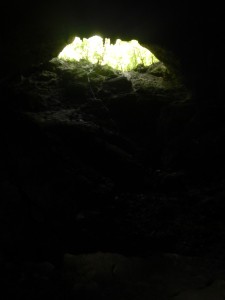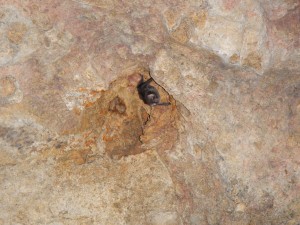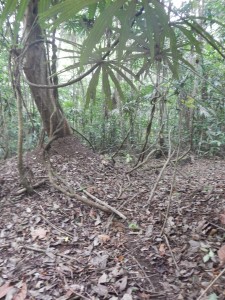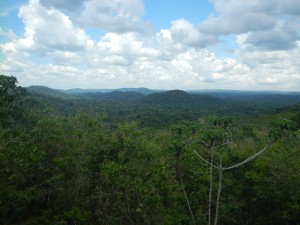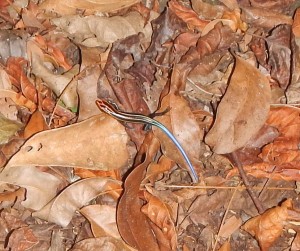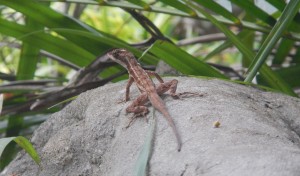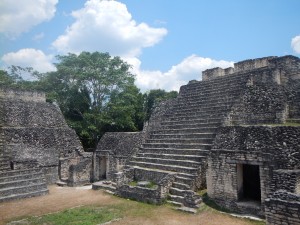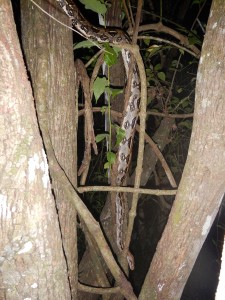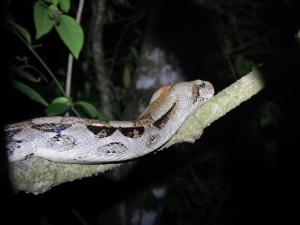For our second to last day at Las Cuevas, we wrapped up our arthropod experiment by collecting all the pitfall traps set along the Maya trail yesterday. The majority of the day was dedicated to data analysis and the presentation of our results; there’s nothing quite like having a poster session in the middle of the rainforest.
We also spent a good part of the day discussing illegal extraction from the Chiquibul and the problems with conservation in Belize. I never fully appreciated the intricacies of conservation biology until today. The Chiquibul’s greatest threat is illegal extraction of plants and animals by Guatemalans from villages along the nearby border. Yet the issue of conservation is much greater than that of sustaining the area’s ecology and incorporates complex economic and political landscapes, as well.
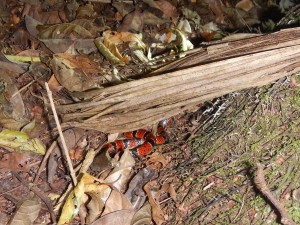
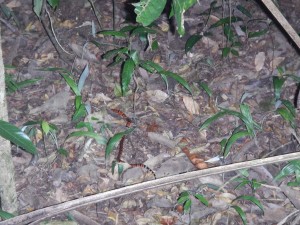
Since our activities were primarily indoors, the day offered few opportunities for reptile sightings. However, I was excited at the prospect of our first night hike—the evening brings out a number of nocturnal species, transforming the Chiquibul into a completely different habitat than it is during the day. We managed to spot all kinds of creepy crawlies, including spiders the size of your face and a giant roach that emitted a sticky white substance. By the end of the hike, I had nearly given up on searching for reptiles in the leaf-litter and under fallen logs. But at the very end of the trail, we approached a sinkhole; as I peered down I heard a shout of “snaaaake!” I looked down to find the distinctive tri-color banded pattern of the Central American coral snake (Micrurus nigrocinctus) all but a foot away from my boot. The snake was small but could clearly be identified as one of the most venomous snakes found in Central America. Just goes to show that you can never stop looking.

